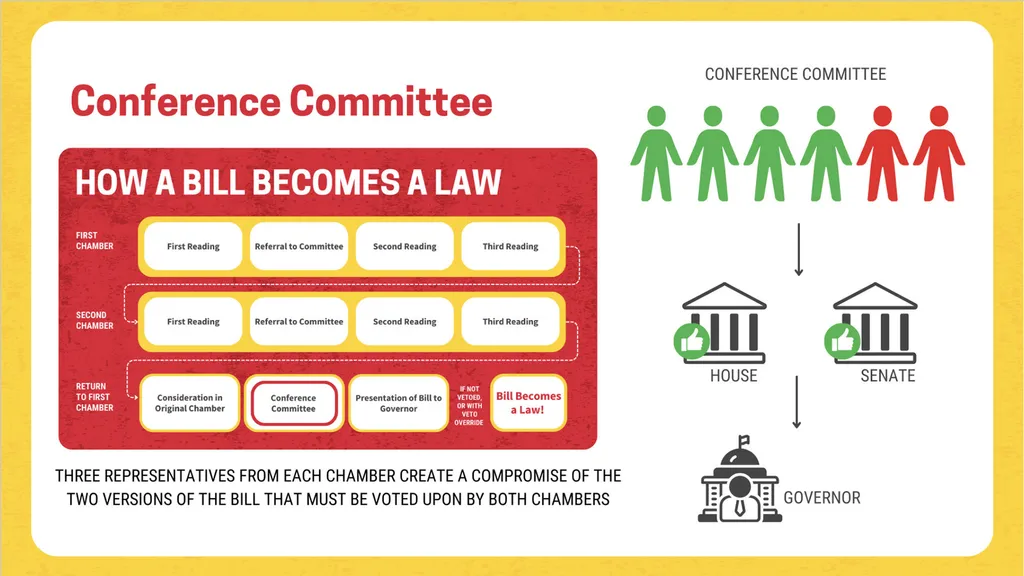- April 04, 2025
- By John Tucker
What happens on Crossover Day at the Maryland General Assembly? When do Holding Committee hearings begin? Why can advocates testify during a bill’s second reading, but not the first or third?
If you’re confused by the processes governing the General Assembly, you’re not alone. (It might not help to consult the 147-page Maryland Legislature’s Handbook, where a chapter on taxation explains that “revenue bonds, as opposed to general obligation bonds, do not constitute a “debt” in the constitutional sense.”)
For those needing a user-friendly primer on legislative proceedings, the University of Maryland Center for Democracy and Civic Engagement (CDCE) has released a suite of visually engaging tools that demystifies the system.
Geared toward students, educators and advocates, Annapolis 101 is a navigational toolbox featuring infographics, a quick-fact pocket guide and a teacher’s kit with a slideshow deck, workbook and “deeper dive” PDF.
“It’s a fantastic resource to help get young people involved in legislation advocacy and fight for their own causes,” said Graham Snyder ’28, an executive board member for the Maryland Youth Advisory Council (MYAC), comprising high school and college students who champion youth-related policies. Working closely with Gov. Wes Moore’s office, MYAC will incorporate the UMD guide into its existing presentation used for town hall discussions and other gatherings across Maryland.

For educators, Annapolis 101 features single-slide summaries answering questions about, for example, the purpose of the General Assembly, presiding officers and standing committees. The materials are also distributed to regular visitors of the State House, where the 2025 legislative session concludes Monday.
On the UMD campus, the guide has already become a roadmap for the Student Government Association (SGA), the Fellows Program and student interns, many of whom are the initial contacts acting on behalf of elected officials.
Eliav Hamburger ’25, who last year served as SGA’s speaker of the legislature, used the toolkit to coach comembers on ways to engage with state legislators about key bills.
“Annapolis 101 served as a perfect springboard for our student advocates to jump right into the General Assembly and help with state-level changemaking,” he said.
Sam Novey, CDCE’s chief strategist, conceived of Annapolis 101 in 2023 after hearing through his network of advocacy groups that many people called to testify at committee hearings didn’t understand the system. “It was hard for them to tell where a bill in the process was and why their testimony mattered,” he recalled. When he delivered a presentation on the topic to the local group Jews United for Justice, he realized that his lecture lacked pizzaz.
He consulted with a Baltimore designer, Maddie Wolf, with whom he’d previously collaborated on student mobilization campaigns. Wolf focuses her work on how laypeople interpret complex information through visuals.
She queried the General Assembly librarian and combed through that daunting handbook, along with other online references. After crafting an initial presentation, she delivered it to a Baltimore church congregation and the prison reentry group H.O.P.E. Baltimore.
“It was the perfect test-case scenario because the people weren’t trained in the legislative process but had lots of life experience,” recalled Wolf, who is now based in Missouri.
The group offered feedback, suggesting pocket guides and workbooks. Later iterations were tested with UMD student groups. “I never had a resource like this in high school, and it was incredible to have such a concise and effective introduction to legislation and advocacy,” Snyder recalled thinking.
The guide was officially unveiled in February by the CDCE, which is housed in the College of Behavioral and Social Sciences. After blasting it out to its network, it teamed up with teachers and students at UMD’s College of Education to deliver it to teachers statewide. Soon, people outside of Maryland began reaching out about creating similar toolkits tailored to their own state legislatures, Novey said.
He noted that the initiative supports CDCE’s mission to help students launch careers in legislative staffing, policy work and elections administration.
Snyder intends to spread that endeavor across the state. “A young person’s voice is more impactful than ever,” he said. “I’m really excited to have another educational opportunity to help students blossom.”
